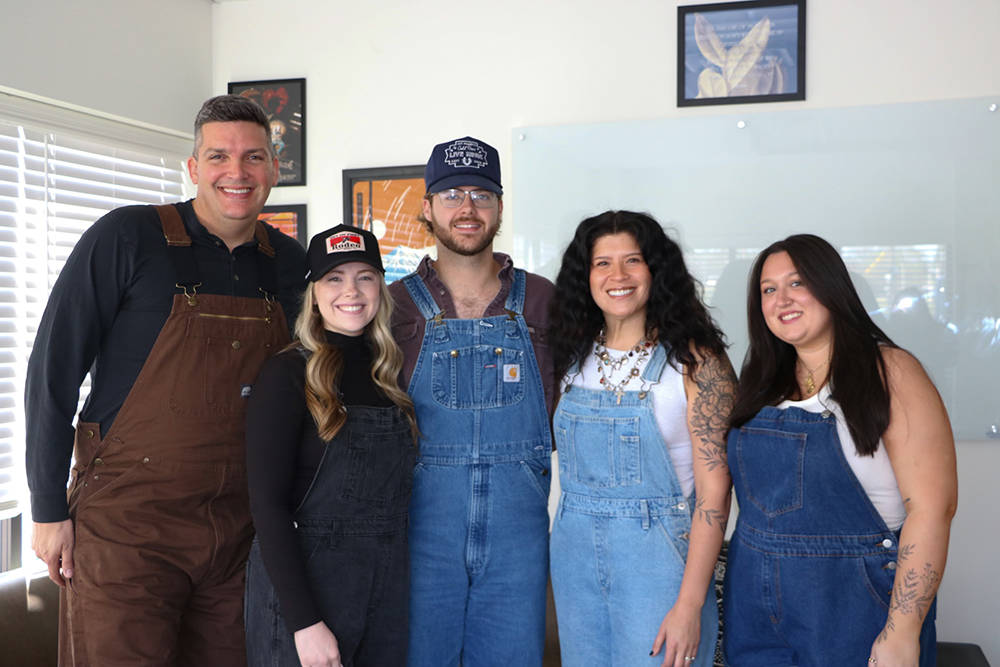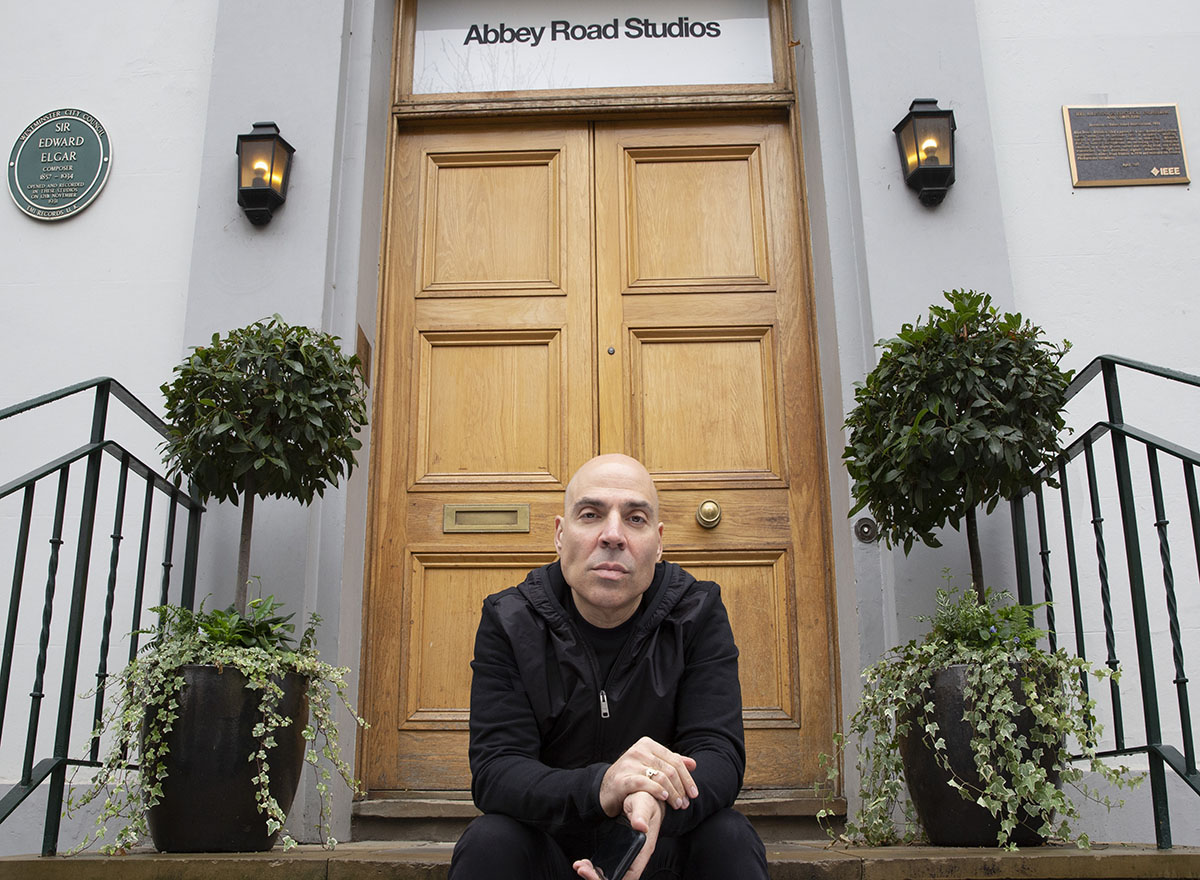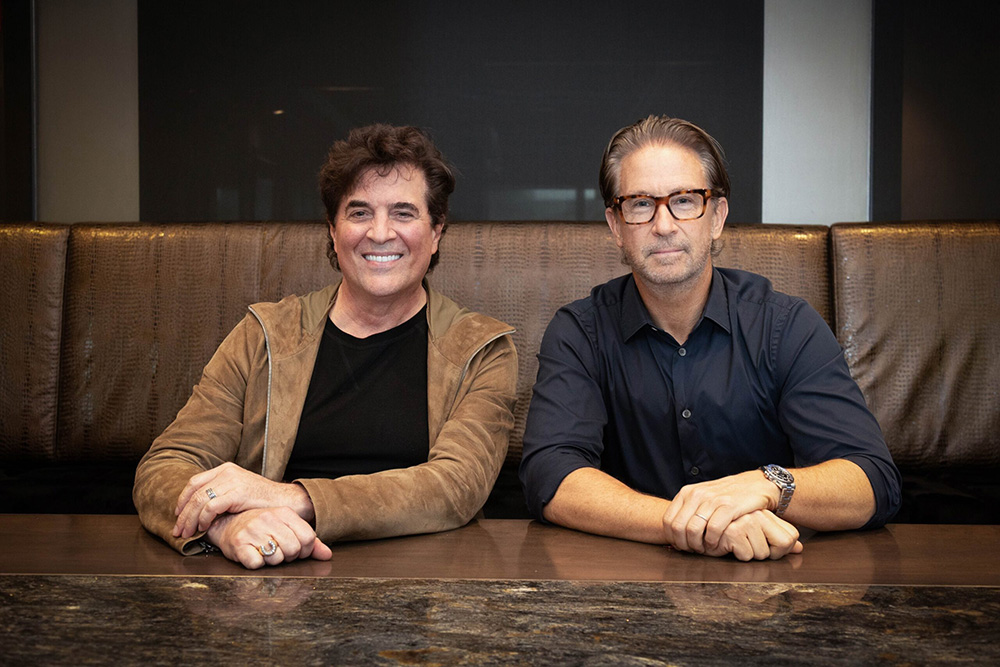(Hypebot) — In addition to researching and investing in gear and software for your home studio, no DIY setup is complete without some strategically planned acoustic treatment.
Guest post by Aaron Trumm of Soundfly’s Flypaper
If you’re putting together a home studio (who isn’t these days?), you’ve probably spent plenty of time researching DAWs, monitors, headphones, mics, synths, plugins, computers, guitars, cables, mic stands, mic clips, mouse pads, flooring, studio cats… Everything but acoustics.
After all, acoustic treatment is the exclusive domain of professional studios and concert venues, right?
Well, no. Because contrary to popular belief, you can deal with acoustics at home — and it doesn’t have to break the bank. And it turns out the number one way you can improve your sound is by doing just a little strategic treatment. So let’s talk about how you can take what you’re already working with in your home studio environment and level it up a bit.
And before we do, if you’re looking to improve your mixing skills in more ways than one, go check out Soundfly’s online course, Faders Up: Modern Mix Techniques. Now, on to the home studio acoustic treatment!
Your Goal: Soundproofing or Acoustic Treatment?
Before you start, consider the goal. Often acoustic treatment is referred to as “soundproofing” but soundproofing actually means isolation — isolating a room so your vicious drumming doesn’t drown out Bob the Builder in the living room. Isolating a room turns out to be trickier, and a very different endeavor. So for this piece we’ll leave that out, even though it may also be desirable to isolate a space; a vocal booth for example.
The goal of acoustic treatment isn’t as much to isolate a room as it is to tame the coloration a room gives to sound, both while recording or when playing back. Since most rooms are not built with acoustics in mind, an average bedroom imparts a lot of coloration. This happens because sound waves reflect off hard surfaces and interact with other reflected and direct sound, changing the nature of what you hear and what’s recorded.
Taming these interactions can help a room record more evenly and of course will improve your mixes.
Absorption vs. Diffusion
There are two ways to handle sound reflections in a room: absorb them or diffuse them.
Diffusion breaks up reflections and spreads them around in various directions, so interactions are less extreme. Big studios and concert venues often use diffusion of various types to make a space sound even but not too “dead.” Diffusion is a little difficult to use effectively in a small space such as a bedroom studio because it requires a lot of space to really do anything.
So, for most home studios, absorption is the only option.
Absorption — if you hadn’t figured it out — simply means to absorb sound waves at reflection points (ie: walls, ceilings, floors, etc.). In concept it’s pretty simple; soft things absorb sound waves. This might cause you to go nail a blanket to every wall. That would make some difference at high frequencies, but it’s a bit more complicated than that, and as it turns out, doing it “right” will yield a far less nauseating effect.
Frequencies: Low vs. High
It turns out low frequency sound (say below about 200-400 Hz or so) needs to be treated differently in most cases than high frequency sound. This is simply because the wavelength of lower frequency sound is larger; in some cases longer than the length of the room in question.
The key thing to remember here is that there are two factors to consider when it comes to a given piece of absorptive material — whether that’s a blanket, a piece of rockwool, or professionally-made acoustic panel:
- The absorption coefficient of the material (some materials absorb sound better than others).
- The thickness of the material (a thicker piece of the same material will absorb to a lower frequency).
If you had the space to put up two-foot-thick absorbing panels, spaced two feet from the walls, well then you would indeed be absorbing at all relevant frequencies. If you did this for every surface (ceiling and floor included), you’d approximate an anechoic chamber — a room with no reflections at all — and you might find it disturbing.
In real life, low frequencies that can’t realistically be absorbed with high frequency absorbers can be absorbed in other ways. This is important to consider, because it’s the lows that are the most problematic in most rooms. Low frequency interaction can cause a boomy room, thin spots where you can’t hear the bass, and can wreak havoc on the lows in your mixes.
When you hang those blankets on the wall, you’re only absorbing very high frequencies, enough to hear when you snap your fingers, but not enough to get your studio in order. Furthermore, if you were to place those two-foot mattresses on the walls and ceiling, you might be doing too much, creating a space that’s just too dead, where no joy can exist.
+ Learn production, composition, songwriting, theory, arranging, mixing, and more — whenever you want and wherever you are. Subscribe for unlimited access!
What to Do About It
Don’t worry, it’s not rocket science (it’s acoustic science, but you can ignore that).
High Frequencies
Since high frequencies act basically like rays of light, bouncing off reflective surfaces at the same angle they approach, it’s easy to deal with them. You’ll just place high frequency panels where they will help the most.
Here are some tips:
- Floor vs. ceiling – Carpeted rooms or rugs can make a huge difference right off the bat, but pro tip: leaving the floors uncovered and treating the ceiling can yield a more natural result.
- Reflection Free Zone (RFZ) – Reflections from studio monitors play havoc with the accuracy of what you hear when you mix, so it’s helpful to set up a reflection free zone around the mix position (where you sit). This means directly to the right and left and above you.
- Recording spaces – If you’re trying to create an even space, not just at one position, you don’t necessarily have to treat every square inch. Try evenly spacing acoustic panels around the room.
Low Frequencies
To absorb low frequencies without having to put up two-foot panels everywhere, you can take advantage of their large wavelengths, which make them behave differently in a small space than high frequencies:
- Corner traps – Corner traps come in a variety of configurations, but the general idea is they absorb bass that tends to build up in corners. Fill every corner you can with some sort of corner traps.
- Panel traps – Panel traps are especially cool because they can absorb low frequencies without being very thick, owing their operation to a very different principle of absorption called a resonating membrane. They’re also awesome for taming low end without absorbing high frequencies (because they’re hard-faced). This is super desirable, because you can almost never absorb too much low end, but you can definitely make a room sound too dead at high frequencies.
- Go beyond the obvious – To absorb enough lows, you may have to look beyond the vertical corners. Corner traps work at the junctions between wall and floor or ceiling too. Panel traps and other kinds of low frequency absorbers can be placed strategically around the room (remembering you really don’t have to make every surface a high frequency absorber).
Materials and DIY
We’ll keep this part short and sweet. You can build this stuff yourself or you can buy it. If you want to save money (and you can save a ton), you can build treatment in an almost endless number of ways and make it look almost any way you want.
Just follow a couple guidelines:
- The big three materials – You can read a tome on acoustic materials, but in our humble opinion you really only need to know about three: Owens-Corning 703 rigid fiberglass insulation, Rockwool, and acoustic foam (Auralex panels). There’s no reason to “build” an Auralex panel, if you’ve bought the material, you’ve bought the panel. So, if you’re building, the main absorptive material you’ll be using is either OC-703 or Rockwool. Pick one. Their absorption coefficients are almost identical.
- Cover the panel – Rockwool and OC-703 are both ugly as sin. OC-703, while more widely used in acoustic materials, is also incredibly itchy and can even be bad for your lungs if little pieces of it get into the air. So, you need to cover the panels in some sort of soft, breathable material. This is your opportunity to get creative and aesthetic. Just cover it fully (not just the front). You can even frame it if you want. When you’re working with it, wear long sleeves, pants, gloves and a mask (trust us on that).
- Thickness – As stated above, for normal absorptive panels, thickness determines the range of frequencies absorbed. Very thin material absorbs only the highest frequencies. Thicker material absorbs more and more of the spectrum. If you want to skip the deep science, here’s a short cut: Two inches. Many kinds of pre-made panels come in 4-inch thicknesses, and this is great for reaching down into the mid-range, but it’s pretty unwieldy. One inch isn’t enough. And two inches happens to be a standard thickness for both Rockwool and OC-703 panels.
- Space from the wall – You don’t have to do this, but if you can manage to space your panel away from the wall — perhaps via some ingenious mounting bracket — you can increase its effectiveness. The amount of space should be equal to the thickness of the panel if at all possible.
Dig Deeper
Admittedly, acoustics science is a deep well, but we hope we’ve given you enough to see that it really is doable and desirable to treat your home studio properly. Your mixes will thank you for it. That said, if you’d like to go deeper, by all means, go for it!
Start with the Master Handbook of Acoustics by F. Alton Everest. This book is a great look at treatment, isolation, and even purpose-built structures. For a little more focus on home studios specifically, check out Home Recording Studio: Build It Like the Pros by Rod Gervais. Finally, to get the best possible foundation and a real understanding of the physics of sound, try Thomas Rossing’s The Science of Sound.
Continue learning with hundreds more lessons on mixing, home audio production, recording, beat making, and much more, with Soundfly’s in-depth courses, like Modern Pop Vocal Production, Advanced Synths & Patch Design, and Faders Up: Modern Mix Techniques (to name a few). Subscribe for access here.
Aaron J. Trumm is a producer, writer, singer (ok rapper) and personal trainer (yep, you read that right). He’s always looking for the next awesome thing to say, and loves to talk to people, so social media him up!


























































